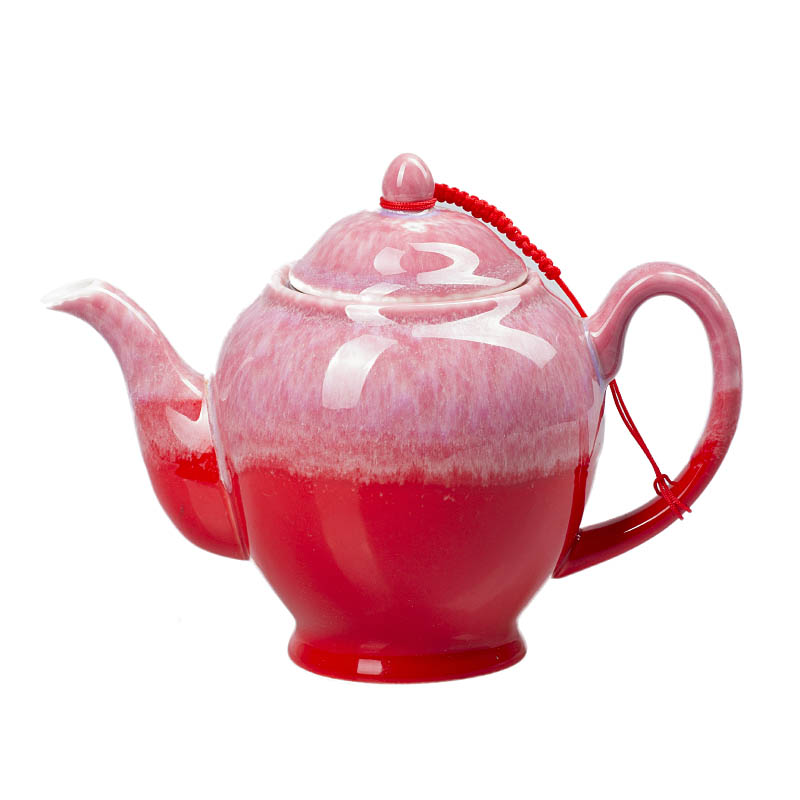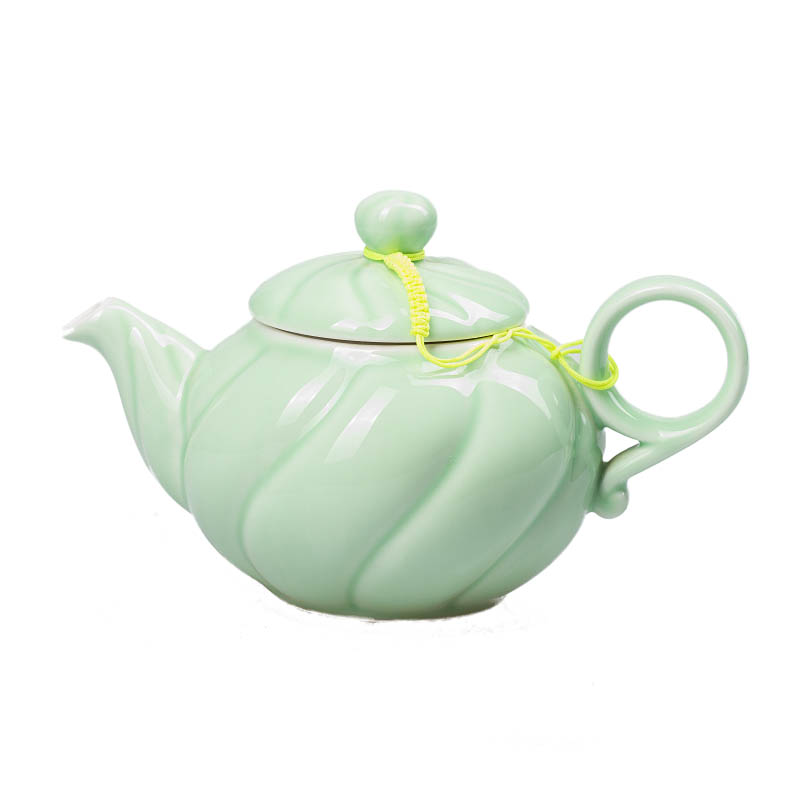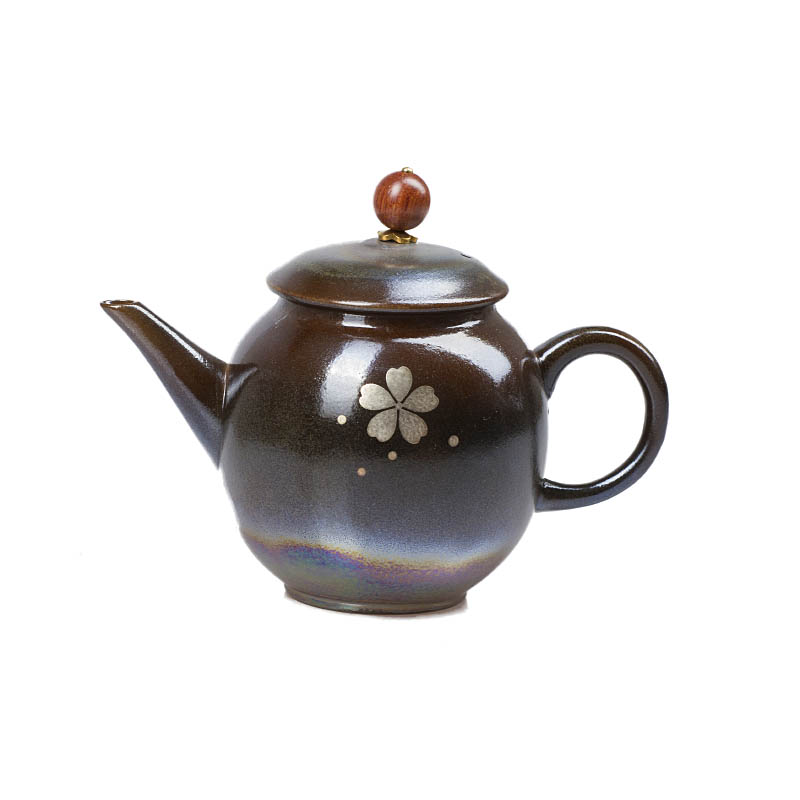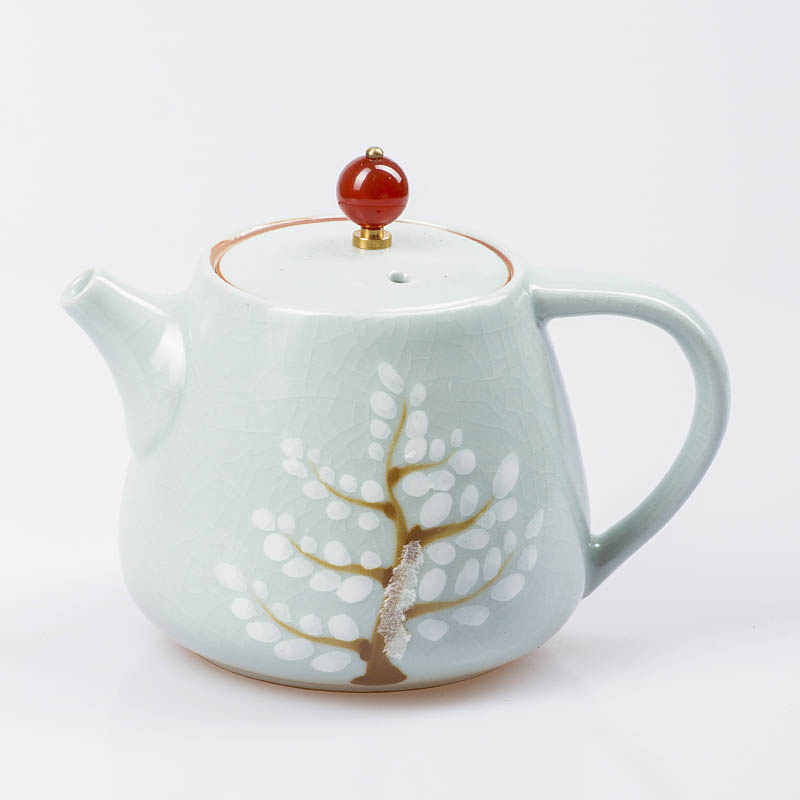Porcelain teapots: luxury on your table and a manifestation of elegant English tradition!
It was China that gave the world an exceptionally beautiful porcelain teapot for brewing! Today, only children do not know about the advantages of porcelain dishes. Anyone who has used real Chinese porcelain at least once in their life could not help but be convinced of its aesthetic elegance, durability, and practicality. Despite the fact that the market is full of all kinds of modern materials, porcelain is a type of ceramics that has not lost its popularity since ancient times. Although it came to Europe only in the 15th century and was instantly appreciated by kings. High-quality Chinese porcelain is still called a "royal gift" today. Ask any housewife: would she refuse a Chinese porcelain service? Having such beauty in the house is prestigious in any fashion trend. Buying a porcelain teapot for brewing means purchasing an exquisite household item that allows you to enjoy the taste and aromatic properties of tea, which are revealed to the fullest.
Today, porcelain is divided into Chinese and European. In essence, they are "relatives", but still have differences in price and quality. But the shine emanating from the inner radiation always unites them!
If you are interested in buying a porcelain teapot, you should know that there are many fakes on the market that pass off, for example, cheap faience as expensive porcelain. How to avoid this - we will give some recommendations below ...
Porcelain teapots, teapots ... They have conquered many connoisseurs of beautiful dishes and tea gourmets who prefer elite varieties to cheap "surrogates". High-quality porcelain is not just a ceramic material with unique physical and chemical properties. It is a lifestyle: bright, successful, allowing you to feel like a real person. Such household items are outwardly beautiful and elegant. Of course, they are a worthy decoration in any kitchen. And most importantly, a porcelain teapot never "gets old". As long as the product exists, the exclusive properties of porcelain are preserved. But what exactly ... read more ...

Porcelain is not a gift of nature in its pure form (it does not exist as an independent material), although it is created on the basis of natural components. It is the creation of a smart person who learned to mix kaolin, feldspar, quartz and plastic clay, as a result subjecting the entire composition to high-temperature firing. The result: the world received a unique ceramic material with valuable characteristics:
- high mechanical strength,
- chemical and thermal resistance,
- Electrical insulation.
What does this mean? Buying a porcelain teapot means purchasing the perfect teaware! Such a product is able to heat up strongly and quickly throughout, thereby keeping the drink warm for a long time.
The porcelain teapot does not absorb odors, which means that during long-term use, you can load any type of tea into the container without fear of spoiling the taste and aromatic properties of the individual raw material.
The unique formulation of the material, which includes magnesium and aluminum, gives the products an exceptional whiteness, for which porcelain is so loved all over the world. Its advantage is present both on the surface and on the break. A special glaze, consisting of several layers, ensures the smoothness and shine of the unique material.
A porcelain teapot for brewing makes it possible to appreciate the sophisticated tastes and aromas of elite varieties of Chinese tea, with all the exquisite notes and shades, enhancing the overall favorable feeling of tea drinking.
Compared to glassware, porcelain products are not easily broken. Their strength is due to the presence of quartz.
How are porcelain teapots made?
First, the mineral mass in pressed cakes is aged in special cellars with air humidity up to 100% for 3-4 months. After that, it is mixed, air is removed and pressing takes place again. Now the work is carried out by modelers and artists, embodying their ideas in teapots. Modelers make plaster models, artists draw sketches, taking into account the air shrinkage of porcelain, which occurs during firing. During mass production, a plastic mold is also created for casting the model. The product is fired at least 2 times at a temperature of approximately 1500 °. Before the final firing, the kitchen vessels are dipped in organic blue paint, which is subsequently burned in the oven. Thanks to it, small defects are actively manifested (in this case, the product is rejected).
How to distinguish a porcelain teapot from an earthenware one?
After all, these are links in the same chain. Outwardly, they are very similar, but differ in composition, production technology and price level. To avoid confusion and deception, please take into account a few recommendations:
- Porcelain, unlike faience, has a lower percentage of clay and a higher content of quartzite, feldspar and kaolin. This ensures the presence of vitreousness, unique whiteness, thermal stability and less porosity.
- Hold the ceramic vessel up to a bright light source. If the translucent layer of the ceramic shines through, it means that you have a porcelain teapot. Earthenware does not let in light, as it is covered with glaze.
- A real Chinese porcelain teapot has a rough base (turn the product over - its lower part should be uneven). Faience, on the contrary, is smooth on all sides. The rough base prevents dishes from sticking to the stand. The unglazed bottom of a porcelain teapot has a pure white color. In faience, as a rule, it is beige or light gray.
- The quality of porcelain is checked by light blows with a wooden stick. In this case, the ceramic item should "emit a melody" with high notes characteristic of the highest quality of the unique material. Some connoisseurs and collectors call Chinese porcelain teapots "singing", and each product can "sing" its own special song. Faience sounds dull, emits lower tones.
- Porcelain and earthenware differ in weight. A porcelain teapot with more elegant shapes and thick walls will weigh less than an earthenware one. An elegant porcelain product is almost weightless.
- The color of the product ... Traditionally, Chinese porcelain teapots are white. They can have different paintings. Earthenware is often multi-colored, bright. But today in China many products are made of colored porcelain. Despite the colorfulness, such dishes have a corresponding transparency and special lightness.
- If you have already made a purchase and started brewing tea... Porcelain has high thermal conductivity, faience - low. If the drink burns in the vessel - you have plain faience in front of you.
- A porcelain teapot never “gets old.” Earthenware can develop small cracks over time, which can harbor pathogenic bacteria. In this case, using the teapot is not recommended.
- With prolonged use of earthenware, a dark coating remains on the inner walls of the teapot. This is absent on porcelain teapots that have been well "sintered" in the oven.
Where to buy a porcelain teapot in Kyiv? Buy at "My Tea"!
Today, you can buy a porcelain teapot for brewing both in tableware stores and on specialized tea online resources. The assortment of "My Tea" includes only high-quality products that you can purchase at a reasonable, fair price. If you enter "porcelain teapot price" into the search engine, you can be sure of the truth of this statement.
White, red, brown, green ... Any of these items will become a worthy decoration of your table and kitchen interior. With it, tea drinking acquires elegance, festivity, conquering with elegance and refined, aristocratic forms. Properly brewed elite Chinese tea in a porcelain teapot is always out of competition! The absence of chemical additives allows you to purchase environmentally friendly dishes.
The design of "musical" porcelain teapots is simple and at the same time interesting. Ingenious laconicism is always in trend! Minimalism is manifested in both form and decor. However, not everything is always clear. Some models have a certain originality with a touch of luxury. However, the Chinese determine "quality" not only by external beauty, but by certain features, thanks to which tea brewing is carried out correctly and ideally. It is easy to buy a porcelain teapot, but it is necessary that it has the following priorities:
- It should be “rounded.” It is the roundness that evenly distributes heat, allowing the tea leaves to fully open.
- The lid of the kettle ... It should have a hole for air, steam escape. It should also fit snugly to the kettle itself. There should be a seal on the rim that prevents it from falling out when the product is tilted.
- The neck of the kettle, the spout hole and the handle should be in the same line.
- There must be symmetry (if you look at the kettle from above).
- When using utensils, the handle should not cause discomfort.
Caring for porcelain Chinese teapots
Buying a porcelain teapot is a matter of prestige for many housewives. Porcelain dishes, like any beautiful and fragile kitchen item, require careful and careful care. Some are very careful when handling such products, not to mention washing them. However, porcelain is not as “scary” as it seems at first glance.
- Today, a porcelain teapot for brewing is not afraid of either dishwashers or microwaves. Their influence does not damage the surface. However, if the design of the product is complex and rich in artistic painting and elements, it is better to wash such a model carefully and by hand.
- Expensive, fine china should be washed in a small plastic container with a soft towel at the bottom. Avoid “washing in a vase under running water.” Warm or slightly cool water is best. Teapots, kettles, and other items with handles should be held by the body, supporting them from below.
- Every porcelain item is afraid of household chemicals. If the dishes are too dirty, it is better to use a gentle, neutral baby soap diluted in water or ordinary baking soda. If the product has become dull, the original shine has disappeared, streaks and cloudy spots remain, a small amount of ammonia should be added to the water - and the situation will change before your eyes. The outside can be wiped with tooth powder or hydrogen peroxide.
- No hard sponges, washcloths, brushes! They scratch the delicate surface of the porcelain! A cloth or soft brush should be used. The spout of the teapot can be cleaned with a baby bottle cleaner.
- To avoid small scratches and cracks, do not leave the product in water for a long time. To wash off the soap, simply dip the kettle in warm water and then lightly wipe with a cloth.
- To avoid leaving traces of water droplets, immediately after washing, you should rub the exquisite item until it shines.
Buying a porcelain teapot remains a matter of taste! Some people will like a simpler model, some - a bright, stylish one. Porcelain dishes are great for both everyday life and for a festive tea party. It creates the right atmosphere and a positive mood. It pleases the eye with attractive aesthetics with motifs of antiquity or floral style. Suitable for any tea variety.
The habit of drinking tea from porcelain was introduced by mannered English aristocrats. According to the English tea culture, a porcelain teapot should be in every home. This is a manifestation of respect for oneself, guests, and a positive atmosphere. Beautiful teaware is not only an opportunity to enjoy the beneficial process of tea drinking, but also a wonderful opportunity to reflect, immerse yourself in your own thoughts and dreams.
A porcelain teapot is a great gift for a Tea lover. It is given to those who truly appreciate the nobility of the drink and its exceptional taste and aromatic properties. As a rule, it becomes the personification of a home, coziness, and comfort. Buy a porcelain teapot and give the opportunity to feel like a king even on the most ordinary, "gray", rainy day!



